KYOTO + SHIKOKU with SAKURA TOUR
Mar. 31 ~ Apr. 10 (9 nights,
11 days)
| This tour is recommended for those who love spring in Japan. Enjoy cherry blossoms, weeping cherry trees, peach blossoms, and the spring festival "Doronko Festival." We also visit Takaya Shrine, famous for its sky Torii, Miho Museum, Scarecrow Village, Naoshima, the island of art, where a new art museum has opened and other attractions you won't often see on other tours. Experience the joys of spring in the countryside with the locals. |
| Date | Place
and Hotel
♨=onsen |
Activity | B | L | D |
| Mar. 31 (Tue) |
|
Depart Honolulu to Kansai airport. |
|
|
|
| Apr. 1 (Wed.) |
KANSAI AIRPORT HOTEL NIKKO |
After arriving at Kansai airport, go to hotel that's connected to the airport terminal. There is a convenience store and some eating place nearby. |
|
|
|
| 2 (Thu) |
TOKUSHIMA
JR HOTEL CLEMENT 
|
From the hotel we visit the Tako Senbei no Sato (Rice cracker factory and shop). We can enjoy shopping about 40 kinds of rice crackers. Then we go to see the Naruto Whirlpools, they are tidal whirlpools in the Naruto strait, a channel between Naruto and Awaji Island. Enjoy the viewing cruise of the Naruto Whirlpools. After lunch we go to Hanamiyama, a famous spot for weeping cherry blossoms with a panoramic view of the Naruto Strait. Next, go to the Awa Odori Hall to see the Awa Odori, a 400 years old traditional local dance. Then we go to the hotel. |
× |
× |
× |
| 3 (Fri) |
KOCHI
RICHMOND HOTEL 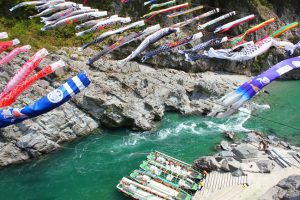 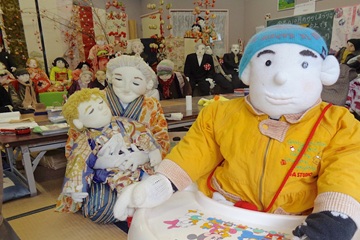 .jpg)
|
From the hotel we go to see the Oboke and Koboke gorges, they were made by the rapid current of the Yoshino River crossing the Shikoku mountains over a period of 200 million years. At this time of year, you can also see about 100 carp streamers. Then we head to the remote Higashi-Iya district of Shikoku. Visit the Oku-Iya Niju Kazurabashi. Tucked way in the deepest part of the Iya Valley, the Double Vine Bridges are more than worth the effort of visiting. Next go to a unique riverside town for the unexplored region of the world Nagoro Scarecrow Village. Filled with hundreds of life-sized dolls instead of residents who are the declining population. Then we see the Ochiai Village Observatory where you can see the mountain village. During the old battle where the samurais that lost, it is said they hid & lived there. After lunch we go to see Kazurabashi, a suspension bridge made of mountain vines. Then we go to the hotel near the shopping arcade. |
× |
× |
× |
| 4 (Sat.) |
KOCHI RICHMOND HOTEL 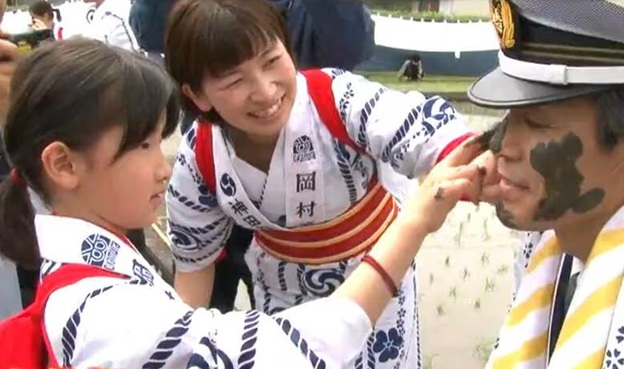 .jpg)  .jpg)
|
From the hotel we go to see the Doronko (muddy) Festival dominated by women., which has been going on for over 400 years. After women in yukata (traditional Japanese clothing) complete rice planting, it’s tradition for them to start smearing mud all over the faces of male spectators. It is believed that men who get smeared won’t suffer from summer illnesses. It is counted as one of Kochi's three most unusual festivals. After lunch we visit Makino Botanical Garden was opened in memory of Makino Tomitaro, a world famous botanist. The buildings are built mostly out of wood, seeming to be in harmony with Mt. Godai. You can also enjoy different plants in the garden each season. Then we go back to the same hotel a little earlier and enjoy shopping at the shopping arcade or Hirome Market. If you want to go after sunset, let’s go to the Kochi Castle Flower Corridor event. The main walkway from Kochi Castle's Otemon Gate to the castle tower will be decorated with flower arrangements and potted planters to welcome you with flowers. The entire venue will also be illuminated with lights, including illuminated flower arrangements along the walkway, lanterns, and lighting up the cherry blossoms and other trees. |
× |
× |
× |
| 5 (Sun) |
SHIKOKU
CHUO ROUTE INN 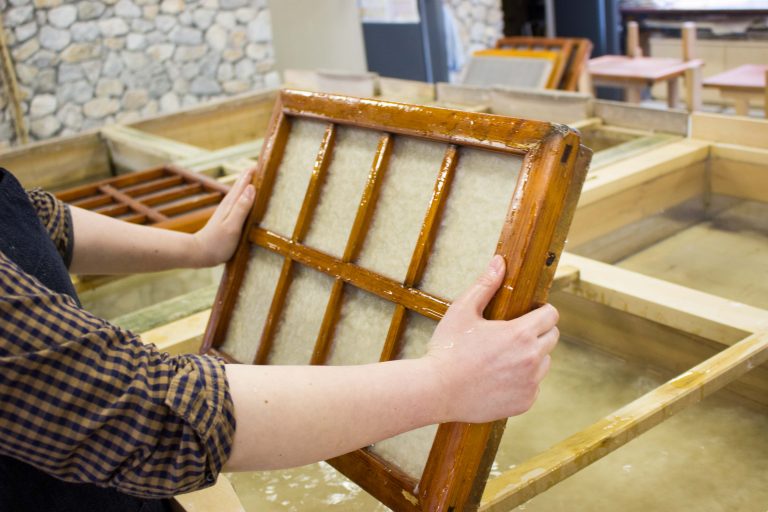 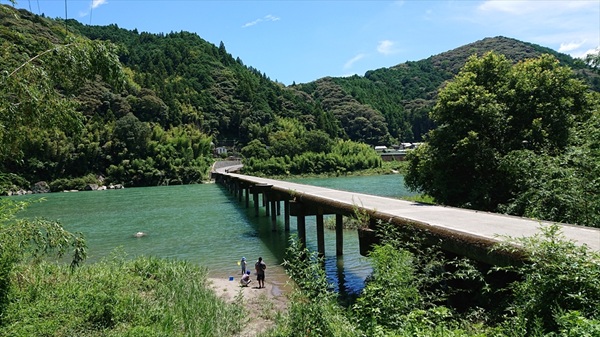 
|
From the hotel we go to the Kochi's Sunday market, this weekly market has been a part of life in Kochi city for well over 300 years. There are varieties of shops & stalls, about 300 that lines the road. Next go to Michi no Eki Qraud to experience making Washi Japanese paper, a handicraft of Kochi prefecture. Then we go to see the Chinkabashi, a submersible bridge and Niyodo river, consistently ranks as the purest river in the country and so is often referred to as “Japan’s most beautiful river.” After lunch, we go to see the peach blossoms in Niyodo Town. This is a handmade flower village that has been developed by local residents in the area, which is facing aging and depopulation, with the aim of "making their hometown brighter and more lively." Next visit the Niko Buchi, is a waterfall basin where a mystical blue color can be seen depending on the time of day the sunlight comes in, and the angle and strength of the light. the color as only being expressible as “Niyodo Blue”, and it instantly became a popular place. Then we go to the hotel. | × |
× |
× |
| 6 (Mon.) |
OKAYAMA
MARINE HOTEL♨ 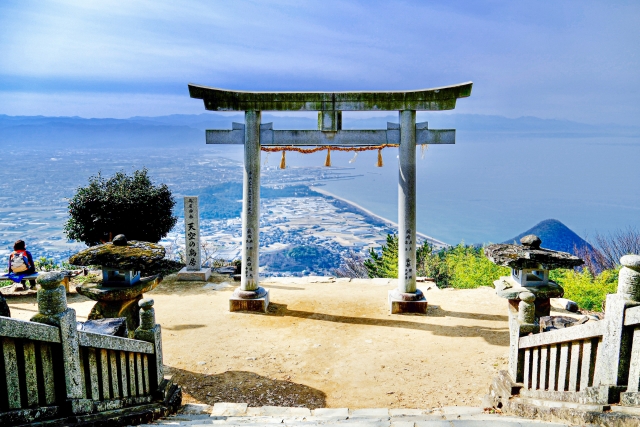 
|
From the hotel we visit the Takaya Shrine, famous as a Torii (gate) in the sky. Then visit the Marugame Uchiwa Fan Museum. Marugame Uchiwa fans now account for 90% of all fans produced in Japan, and over one billion are made each year. In 1997 the Japanese government officially recognized them as traditional craft products. Let’s experience making Uchiwa. After lunch we head to Kurashiki via the Great Seto Bridge, which connects Honshu and Shikoku. We visit Kurashiki Bikan Historical Quarter, this townscape is known for the characteristically Japanese white walls of its residences and the willow trees lining the banks of the Kurashiki River, has earned recognition as an Important Preservation District for Groups of Traditional Buildings. Then we go to the hotel. | × |
× |
× |
| 7 (Tue.) |
OKAYAMA
MARINE HOTEL♨  
|
From the Uno port ride the ferry and go to Naoshima Island known as Japan's Art Island (Dep.9:22 Arr.9:42). We visit Naoshima New Museum of Art. As the first museum to bear the name of Naoshima, it aims to further explore what it means to be a museum profoundly connected to the spirit of the local community, creating an even greater harmony between art, architecture, nature, and daily life on the island. After lunch we visit the Chichu Art Museum, was constructed in 2004 as a site rethinking the relationship between nature and people. The museum was built mostly underground to avoid affecting the beautiful natural scenery of the Seto Inland Sea. Then we visit Minamidera. Naoshima's art works can be enjoyed without any prior knowledge of art. After sightseeing in Naoshima Island, take the ferry back to Uno Port (Dep.14:55 Arr.15:15). Then we go back to the same hotel. |
× |
× |
× |
| 8 (Wed.) |
KYOTO
MIYAKO HOTEL 
|
From the hotel we go to Himeji castle, it is both a national treasure and a world heritage site. Unlike many other Japanese castles, it was never destroyed by war, earthquake or fire and survives to this day as one of the country's twelve original castles. After lunch we go to the hotel. After check-in to the hotel then you can enjoy shopping, places like Aeon, Daiso, Uniqlo, etc. near to the hotel. After sunset, we go to see the illuminations of the cherry blossoms at the Toji Temple. |
× |
× |
|
| 9 (Thu.) |
KYOTO
MIYAKO HOTEL 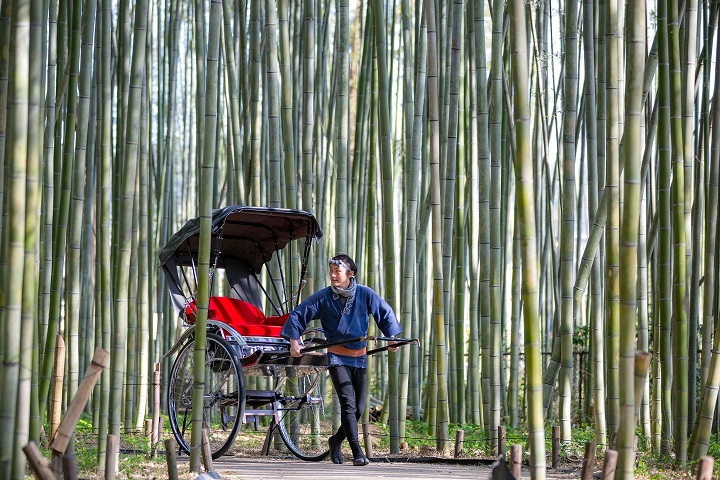
|
From the hotel we go to Arashiyama District. Enjoy riding the rickshaw which will take you through their famous bamboo grove and nearby area. After lunch we visit the Philosopher’s Path. Let’s enjoy HoloHolo with many Sakura. Then we visit Heian Shrine, it is a very popular cherry blossom viewing spot and large numbers of weeping cherry trees are planted in the garden of the shrine. *The itinerary for this day will be subject to change depending on the cherry blossom conditions. | × |
× |
|
| 10 (Fri.) |
  |
From the hotel we visit the Miho Museum to see cherry blossoms. When the cherry blossoms are in full bloom in spring, the cherry blossom tunnel outside the museum is like a dream, and the pink and white sea of flowers reflects the tranquility and magnificence of this art palace. Next go to the Shoju-in Temple. In the side hall there is a heart-shaped window from which the pink cherry blossoms can be seen. The heart shape is a traditional pattern used in Japan for fortunes and blessings, so this window is known as the "Window of Happiness," and always attracts many visitors. After that we go to Aeon Mall for lunch and shopping before going to Kansai airport for your departure flight to Honolulu. |
× |
|
|